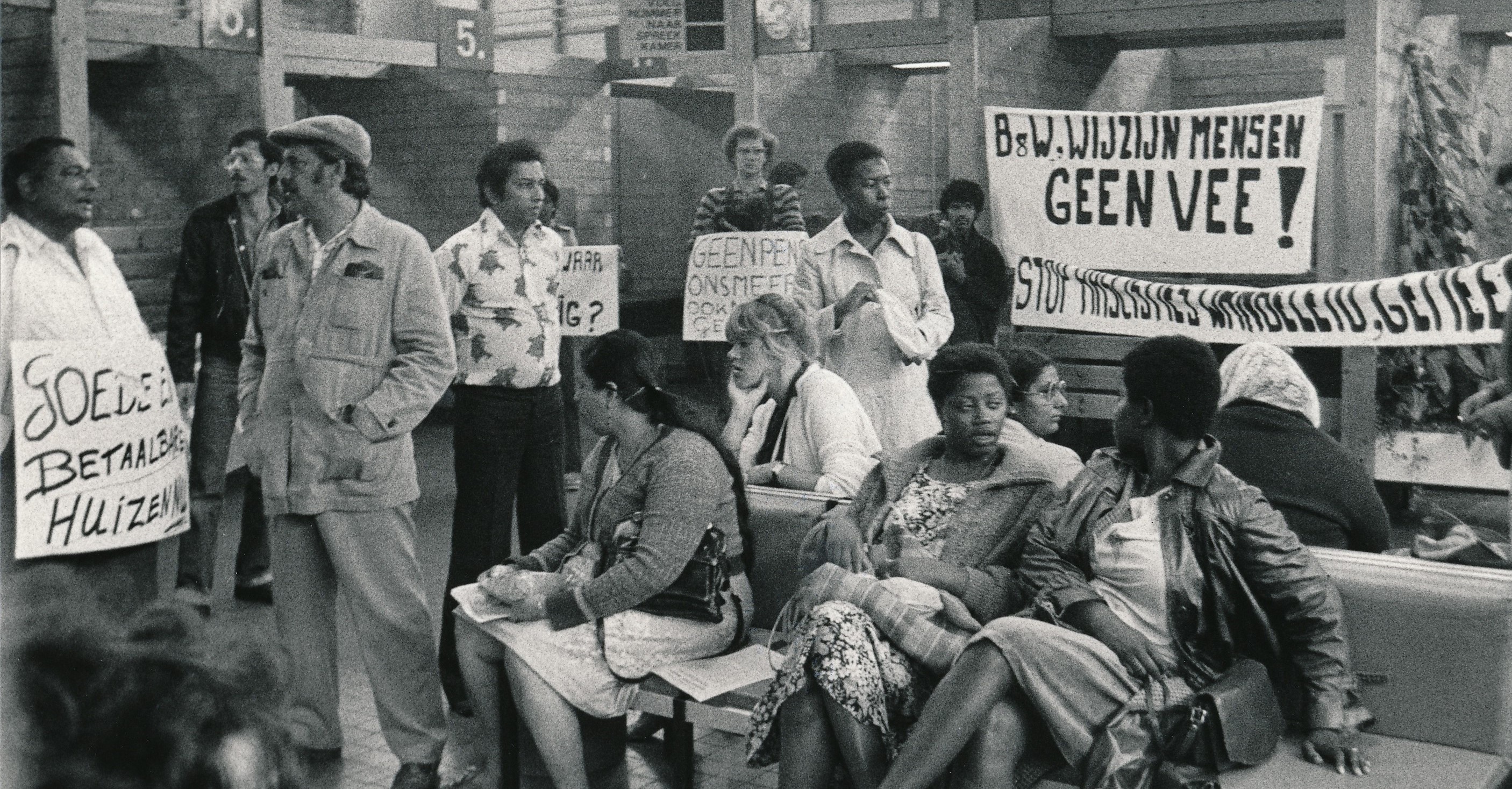For this piece, the author spoke with Andre Reeder, Huib de Vet, and Klaas Breunissen. In addition to the sources mentioned, I also made use of overviews in publications De Minderheden: 600.000 vreemdelingen in Nederland (Minorities, 600,000 foreigners in the Netherlands) by Peter Schumacher (Van Gennep, 1980) and the blog of the BijlmerMuseum.
The reconstruction also shows that in 1972 the Dutch Minister of Justice Dries van Agt suggested the idea “to amend the constitution in such a way that fellow citizens could be stopped at (the Dutch airport) Schiphol, despite their Dutch passport.” Hans Buddingh, “Stroom Surinaamse immigranten veroorzaakte paniek in bestuurlijk Nederland; Rijksgenoten op de stoep” (“Flow of Surinamese immigrants caused panic in administrative Netherlands; Reichmen on the doorstep”), NRC, November 24, 1995, ➝.
“Plan van Den Uyl om volksverhuizing in te dammen: Suriname al 1 juli 75 onafhankelijk” (“Den Uyl's plan to curb population movement: Suriname independent as early as July 1, ‘75”), De Telegraaf, September 3, 1974, ➝.
Andre Reeder, Onderneming Onderdak (1982), ➝.
“Huisvesting gastarbeiders laat veel te wensen over” (Housing guest workers leaves much to be desired”), Reformatorisch Dagblad, December 17, 1971, ➝.
Fractie van D'66, “Amsterdam machteloos tegenover noodtoestand Surinaamse pensions” (“Amsterdam powerless in the face of emergency Surinamese boarding houses”), Reformatorisch Dagblad, February 26, 1973, ➝.
This was nearly one quarter of the total Surinamese population.
“Ander spreidingsbeleid” (“Other dispersion policies”) , interview with Louis Kuijpers, Het Parool, January 5, 1978.
Translated by Annemarie Toebosch.
This story was first published by De Correspondent in Dutch.
